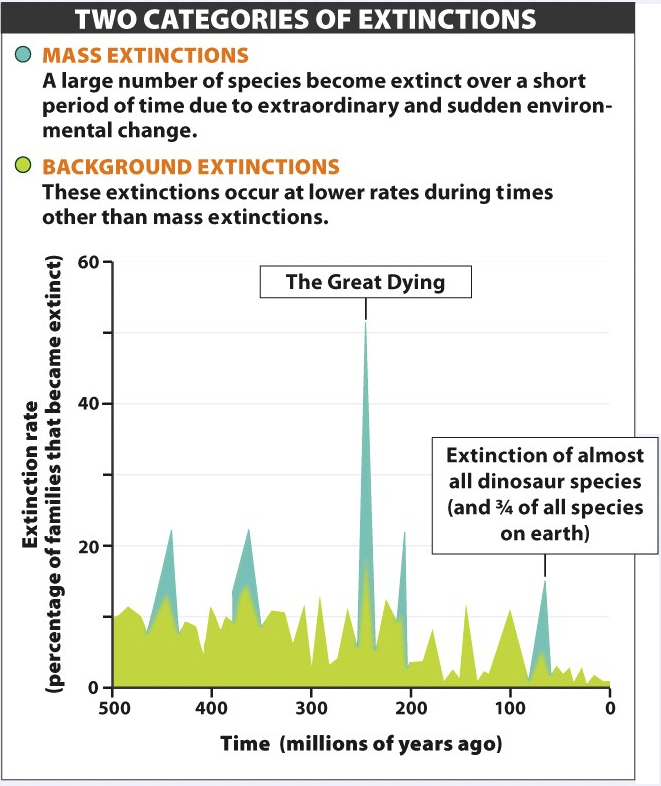
Chapter 10. Chapter 10 Graphic Content
Introduction

Instructions
Review the information provided in the graph to answer each question below.
After submitting your answer, you will be provided feedback to check if your response is correct.
(This activity contains 6 questions.)
1.

1. What is the approximate rate of background extinctions over the time period shown here?
2.

2. What distinguishes the mass extinctions from the background extinctions in this figure?
3.

3. Why do you think the graph records the percentage of families becoming extinct rather than the percentage of species becoming extinct?
4.

4. Why isn’t the green line indicating the rate of background extinctions a straight line?
5.

5. Rates of extinction are generally estimated based on the fossil record. Why might this not be an accurate measure of the magnitude of a mass extinction?
6.

6. Conservation biologists believe it is important that we keep a close watch on the current rate of extinctions. Why might that be?
Activity results are being submitted...